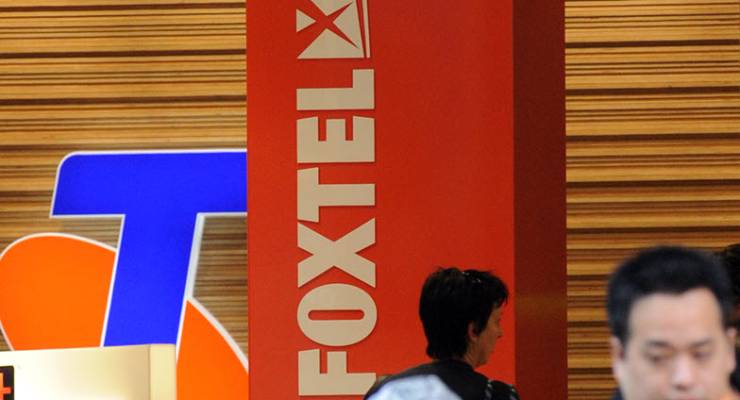
News Corp’s exposure to the sluggish Australian economy has again dragged down the performance of the Murdoch family’s legacy media business in the three months to December.
News Corp controls about 70% of daily newspaper sales in Australia, owns dominant real estate listings subsidiary REA Group, and Foxtel — a continuing weakness for the company.
News reported Friday that second quarter revenues dipped 6% to US$2.48 billion, from US$2.63 billion in the December quarter of 2018.
News said US$50 million came from negative impact from foreign currency fluctuations. The rest resulted from a weak quarter for the company’s book publishing business, lower subscription revenue at Foxtel, lower print-advertising revenue in the news segment, and the impact of a weaker Australian housing market on REA Group.
News said these problems were partially offset by continued growth in circulation and subscription revenues at the news and information services business (thanks to good performances from the Wall Street Journal and in the UK).
Adjusted revenues (which exclude the foreign currency impact, acquisitions and divestitures) declined 4%.
That saw net profit for the quarter dip 13% to US$103 million from US$119 million in the prior year.
The result, though, was made to look better by a one-off US$22 million benefit from the settlement of disputed costs in the company’s UK newspaper printing operations.
It was problems at Foxtel that really stood out from the report (though not from the online analysts’ briefing) once again: falling subscriber numbers, revenues and earnings.
No wonder it continues to sack staff, cut costs and is looking to ditch lower-profile sports like rugby union and Australian soccer.
The News Corp report revealed that Telstra, which owns 35% of Foxtel, has finally been dragged to the table to lend the struggling pay-TV giant $170 million.
This is on top of the US$700 million in shareholder loans from News Corp and other loans under a refinancing done last November, which has not yet been fully reported by News Corp.
Up until now Telstra has stood apart from News Corp’s increasing support of Foxtel via shareholder loans to enable the pay TV group to repay loans to banks and other financiers that fell due in 2019.
Those shareholder loans are subordinated (meaning News Corp ranks behind the other external lenders).
According to Friday’s filing, Telstra will effectively subsidise the costs of cable transmission facilities to Foxtel — that will lower Foxtel’s operating costs and there won’t be any interest costs because Telstra has agreed that those costs can be capitalised by being added to the value of the loan each payment period.
Who says corporate welfare isn’t dead? Telstra wouldn’t be as generous to consumer or small businesses with cash flow or repayment periods by offering to subsidise their costs, would they?
And analysis of the News filing and those previously issued in 2019 reveal how subscriber growth slowed and fell over the year, especially from the close of the 2018-19 financial year.
News said Foxtel had 2.95 million subscribers, an increase of 3% compared to the prior year, mostly down to subscriber growth at sports streaming service Kayo — partially offset by lower broadcast subscribers.
And so it did, but compared to June 30, when the figure rose to 3.14 million subscribers, there was a fall of 6%, or 192,000, from July 1 to the end of December 2019.
And that fall was concentrated in the broadcast (household) and commercial (pubs and clubs) subscribers where the number fell from “approximately 2.4 million” at June 30 to 2.26 million at the end of 2019 — a fall of 132,000 or 5.2%.
Kayo had 382,000 total subscribers at the end of last June, by the end of December that was 372,000, a 3% dip.
But the biggest fall was in subscriber numbers for Foxtel Now, the more general streaming service, which saw its subscriber numbers fall to 334,000 at the end of December from 460,000 at the end of June. That was a loss of 127,000 subscribers or a crushing 27%.
Foxtel’s revenues fell US$61 million or 11% in the quarter, with US$25 million coming from currency factors. Ignoring that factor, those revenues fell 6%.
News said that apart from currency, revenue fell because of the lower number of broadcast subscribers, and changes in their subscriber packages. It said this was partially offset by higher revenues from Foxtel’s over-the-top products, Kayo and Foxtel Now.
Pre-tax earnings fell 17% in the quarter and even on News Corp’s favoured adjusted basis (which strips out currency and other one offs), it fell 12%.
It’s no wonder the key subscription metric, ARPU (average revenue per user) dipped at the end of December.
News revealed Friday morning in the analysts’ briefing that it was planning to launch an entertainment streaming service (off the Kayo streaming platform) in the fourth quarter of this year.
Going on the slide in the six months to the end of December in Foxtel Now subscriber numbers, that looks being a risky proposition, especially taking on Netflix, Stan, Disney and other rivals.








How to save some money at Foxtel/Sky……………first, sack Paul Murray, Andrew Bolt, Peta Credlin, Alan Jones, Rita Panahi, Chris Kenny, Rowan Dean.
That should help the bottom line and lift the quality of broadcasting.
Yes Virginia, there is a Santa Claus?
Question. Is there any part of Murdoch’s Australian operations that is making money? I’m not aware of any.
If that is true, how exactly does it stay afloat?
LNP Government donations.
Bad news for NewsCrap is good news for Australians.
I cancelled a couple of year ago…because of the Murdochs. When I told this to the person at the call centre, I was astonished that they actually had a prepared answer!